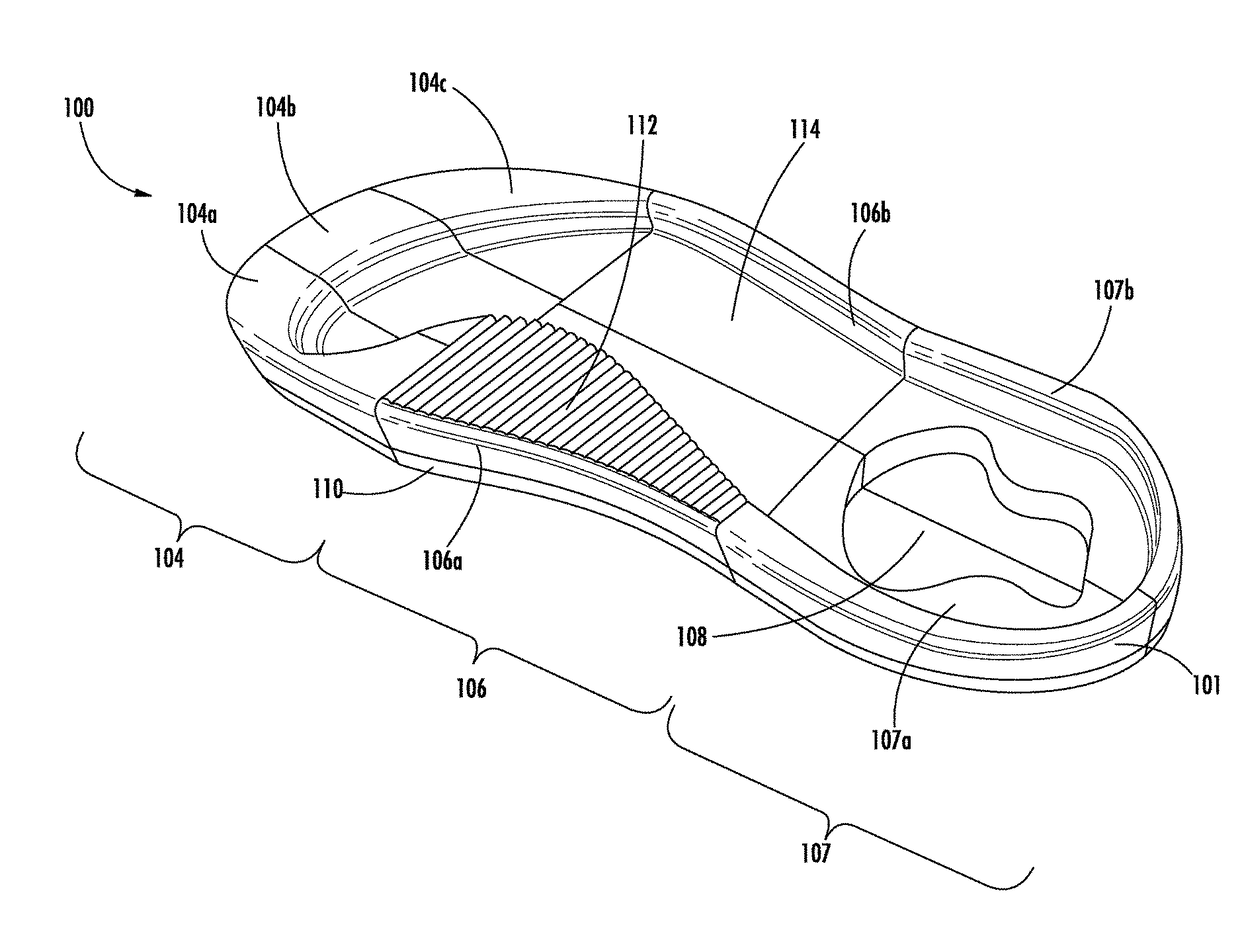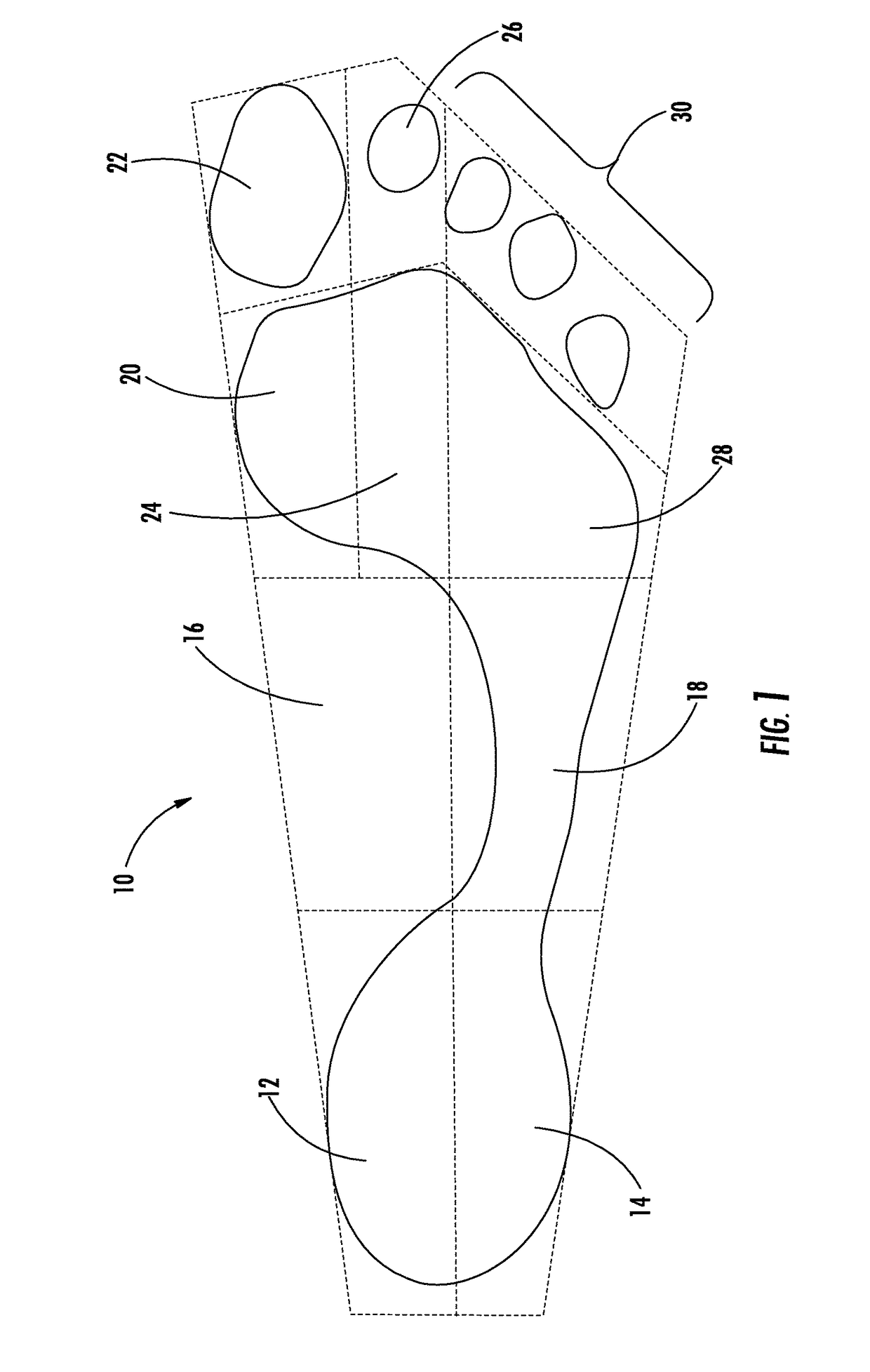Customized insoles for diabetic and pressure ulcers
a technology for diabetics and insoles, applied in the field of customized insoles for diabetics and pressure ulcers, can solve the problems of reduced mobility, embrittlement and vulnerability to cracking, and development of heel ulcers, and achieve the effects of low stretch ratio, high stretch ratio, and low stretch ratio
- Summary
- Abstract
- Description
- Claims
- Application Information
AI Technical Summary
Benefits of technology
Problems solved by technology
Method used
Image
Examples
example 1
eparation
[0170]As shown in FIG. 3, the insole mold 300 was divided into seven major foot regions (a medial heel region 301, a lateral heel region 303, a medial midfoot region 305, a lateral midfoot region 307, a first metatarsal region 309, a second metatarsal region 311, and a lateral metatarsal region 313). SOLIDWORKS software was used to create data representative of a three dimensional model of the user's foot and data representative of a three dimensional model of the inverse mold for the insole based on the data representative of the three dimensional model of the user's foot. The data representative of the three dimensional model of the inverse mold was used to print the inverse mold using additive manufacturing (e.g., using polylactic acid (PLA) filament), as shown in FIG. 3. Multiple skin-like materials (with the same or different stiffness properties), such as those described above, were poured into regions periodically (e.g., at 1 hour intervals) to allow the materials to...
example 2
l Insole Designs with Custom Isolation Segment
[0172]FIGS. 6 and 7 illustrate additional examples of custom insoles 600, 700, respectively, that include differently shaped support regions and support materials for each support region. In particular, the insole 600 shown in FIG. 6 includes base layer 610 and support layer 601, and the support layer 601 includes forefoot support region 604, medial midfoot support region 606a, lateral midfoot support region 606b, and heel support region 607. The material of the base layer 610 is harder than the materials of the support layer 601. The isolation segment 608 is defined in the heel support region 607. In use, the forefoot support region 604 supports the hallux portion 22, the second toe portion 26, the lateral toe portion 30, the lateral metatarsal portion 28, and portion of the second metatarsal portion 24 of the wearer's foot 10. The medial midfoot support region 606a supports the first metatarsal portion 20, a portion of the second metat...
PUM
 Login to View More
Login to View More Abstract
Description
Claims
Application Information
 Login to View More
Login to View More - R&D
- Intellectual Property
- Life Sciences
- Materials
- Tech Scout
- Unparalleled Data Quality
- Higher Quality Content
- 60% Fewer Hallucinations
Browse by: Latest US Patents, China's latest patents, Technical Efficacy Thesaurus, Application Domain, Technology Topic, Popular Technical Reports.
© 2025 PatSnap. All rights reserved.Legal|Privacy policy|Modern Slavery Act Transparency Statement|Sitemap|About US| Contact US: help@patsnap.com



